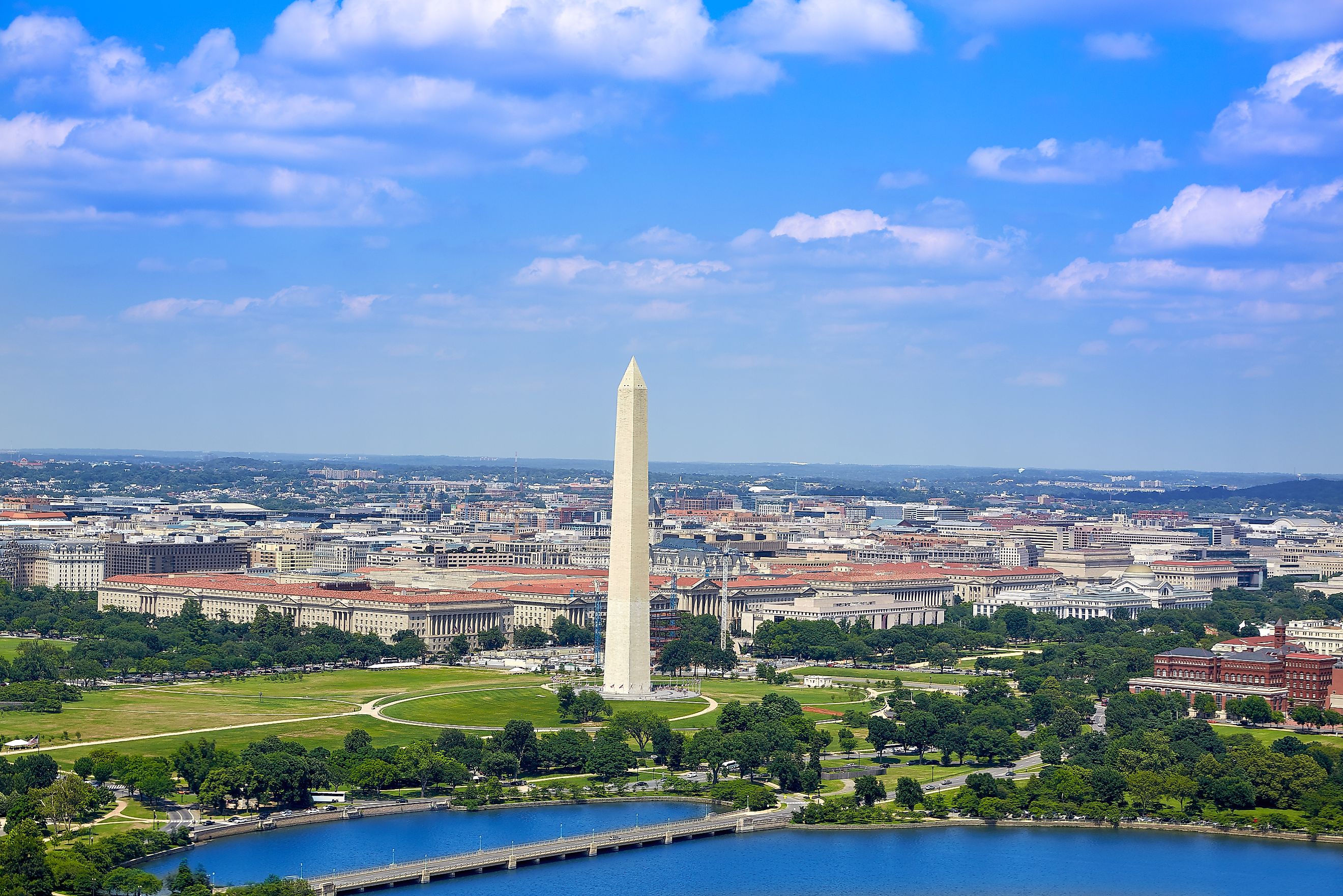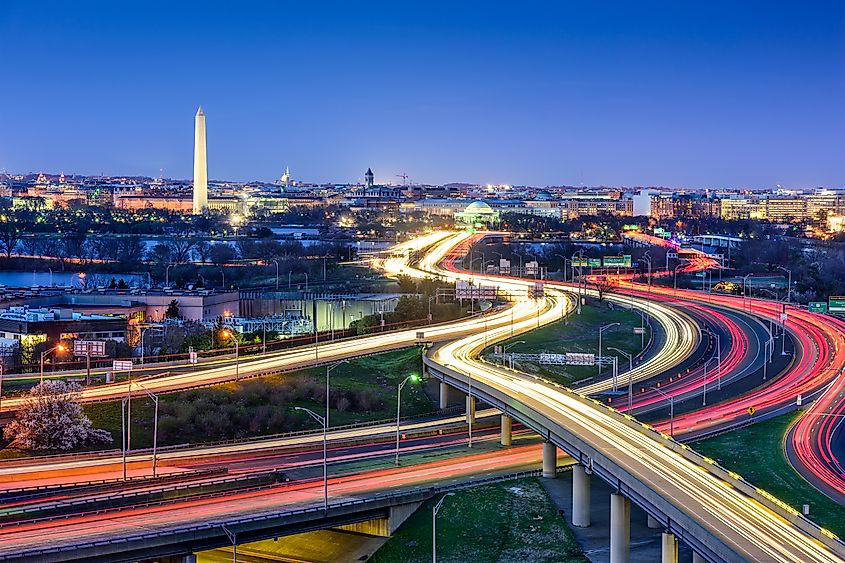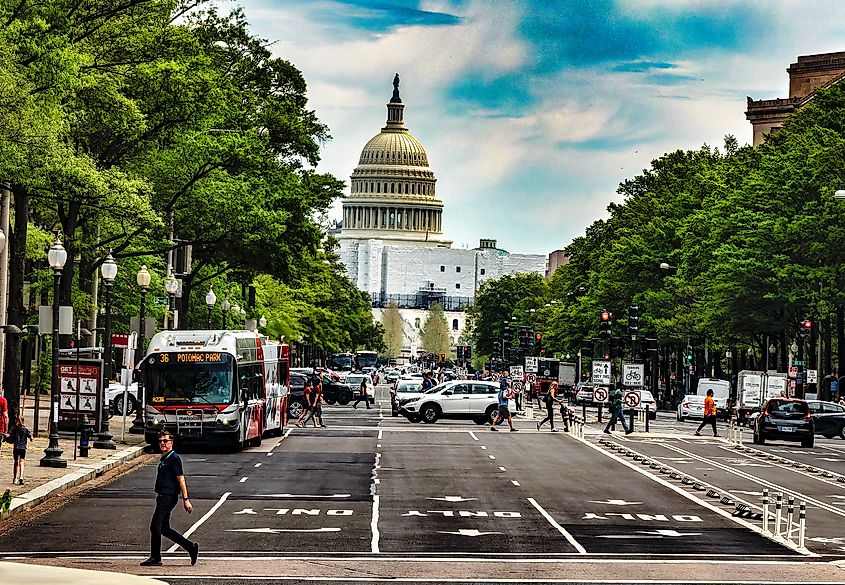
Where is The District of Columbia?
The District of Columbia, better known as Washington, D.C. is a compact yet influential territory that serves as the epicenter of American governance and history. Its geographical location is not merely a matter of coordinates, but a defining feature that underscores its significance as the nation's capital. Explore the exact location, history, and political ties of Washington, D.C., unraveling the layers of its identity and understanding the reasons behind its enduring importance in the fabric of the United States.
Location

Located along the Potomac River between Maryland and Virginia, Washington, D.C. occupies a strategic geographical position within the United States. Its coordinates are approximately 38.9072° N latitude and 77.0369° W longitude, placing it at the "heart of the nation." Bordered by Maryland to the northeast, north, and northwest, and Virginia to the southwest, south, and southeast, the District of Columbia is distinct from any state, functioning independently as a federal district. Its proximity to the Atlantic coast and its central location on the Eastern Seaboard contribute to its accessibility and significance as a political and cultural hub.
History

The history of Washington, D.C. is deeply intertwined with the evolution of the United States as a nation. Established in 1790 through the Residence Act, the District of Columbia was chosen as the site for the nation's capital, encompassing a 100-square-mile area along the Potomac River. This decision was a strategic move by the Founding Fathers to create a neutral ground for the federal government, free from the influence of any individual state.
Over the centuries, Washington, D.C. has played a central role in shaping American history. It has been the backdrop for key events such as the signing of the Declaration of Independence in 1776 and the drafting of the United States Constitution in 1787. The city served as a crucial theater during the Civil War, witnessing significant battles and serving as a refuge for escaped slaves seeking freedom.
Washington, D.C. has been at the forefront of social and political movements, from the Civil Rights Movement of the 1960s to the ongoing struggle for statehood and representation. Its monuments, memorials, and museums stand as enduring symbols of the nation's collective memory and identity, attracting visitors from around the world to learn about its rich history.
Political Importance

Washington, D.C. holds immense political significance as the capital of the United States, housing the Executive, Legislative, and Judicial branches of government. The White House, Capitol Building, and Supreme Court serve as iconic symbols of democratic principles. The city plays a central role in shaping national policies, with the Executive Branch making crucial decisions from the White House, while Congress convenes in the Capitol Building to debate and enact laws.
Additionally, Washington, D.C. serves as a diplomatic hub, hosting embassies and fostering international cooperation.
Economics

Washington, D.C. is not only a political center but also a vibrant economic and cultural hub. Its diverse population and rich history contribute to its dynamic experience. The city's renowned museums, theaters, and monuments draw millions of visitors annually, boosting its economy. Key sectors such as government, tourism, education, healthcare, and professional services drive economic growth, supported by the presence of federal agencies and institutions.
Tourism is a major economic driver, with iconic landmarks like the Smithsonian museums. The city's prestigious universities, including Georgetown and George Washington University, foster innovation and knowledge creation, while its world-class healthcare facilities, such as MedStar Georgetown University Hospital, serve local and global communities.
Despite its governmental focus, the city's economy is diverse and dynamic, fueled by a mix of industries that make it a vibrant economic center within the nation.
Challenges

Washington, D.C., despite its status as the nation's capital, encounters various challenges. Foremost among these is the absence of full voting rights for its residents in Congress due to its federal district status, prompting discussions on democratic representation and statehood. Socioeconomic disparities, including poverty and homelessness, further compound the city's issues, aggravated by soaring housing costs and gentrification. Governance presents another hurdle, with local autonomy overshadowed by federal authority, leading to conflicts in prioritizing issues.
Moreover, the city grapples with aging infrastructure, encompassing transportation systems and public transit inadequacies, which hinder daily life and economic growth. These challenges underscore the necessity for Washington, D.C. to address governance, representation, and infrastructure to ensure the welfare and prosperity of its populace. Yet, amidst these obstacles, the city continues to evolve, with ongoing efforts to tackle shortcomings and pave the way for a brighter future for all residents.
Conclusion
The District of Columbia occupies a unique position within the United States, both geographically and symbolically. Its location, history, political importance, cultural vibrancy, and economic vitality make it a fascinating subject of study and exploration. As we navigate the complexities of the modern world, understanding the significance of Washington, D.C. serves as a reminder of the enduring legacy and promise of the American experiment.